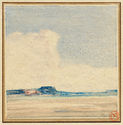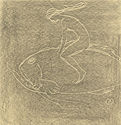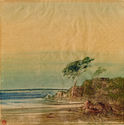
19th, 20th & 21st Century Fine Prints
707-546-7352 · fax 707-546-7924 · web: www.annexgalleries.com · email: artannex@aol.com
Xavier Martinez Biography
Xavier Martinez
American
1869–1943
Biography
Xavier Tizoc Martinez, painter, etcher, lecturer, writer and teacher, was born in Guadalajara, Mexico on February 7, 1869, to a Mexican father and Spanish mother. He was originally christened Javier Timoteo Martinez y Orozco, but he later changed it to acknowledge his indigenous Purepecha heritage. A precocious child, Martinez taught himself French and studied French poetry while still in grammar school, and an early interest in art led to 13 year-old Martinez's enrollment at the Liceo de Verones (Grammar School for Men), where he studied pre-Columbian archeology and the graphic design. Meanwhile, he apprenticed as a bookbinder and printer in his father's bookshop.
At age seveneteen, after the death of his mother, he was fostered by U.S. consul Alexander Coney who worked for Mexico's foreign office. He and his wife, Mexican artistocrat Rosalia LaBastida, were relocated by the U.S. government to San Francisco, California, in 1893, bringing Martinez with them to attend the Mark Hopkins School of Design. There he studied with Arthur Matthews and recieved the Avery Golden Medal in painting in 1895. Meanwhile, he joined the San Francisco Sketch Club, the San Francisco Art Association, and the Bohemian Club, to whom he sent paintings for exhibitions after accepting a scholarship from the school to study in Paris at the Ecole des Beaux-Art with Gerome and the Academie Carriere, from 1897 to 1901. It was here that he was exposed to Tonalism, Fauvism, and the beginnings of Modernism, all of which remained an influence on Martinez throughout his career.
Upon his return to the United States in 1901, Martinez established his studio in San Francisco with artist Gotardo Piazzoni, with whom he briedly founded the California Society of Artists. He continued to exhibit throughout the Bay Area, and In 1905 he traveled with fellow Society member Maynard Dixon to Arizona and Mexico, holding an exhibtion of Tonalist Mexican landscapes after their return, receiving critial acclaim. Sadly, following the 1906 earthquake and its subsequent fires, Martinez lost his studio and the work it held. He relocated shortly thereafter to Piedmont, and he taught in Oakland at the California School of Arts and Crafts between 1909 and 1942.
From this time Martinez held several teaching positions throughout the Bay Area , including the California School of Arts and Crafts, Berkeley, and the California School of Fine Arts, SF. He also taught summer courses from his studio in Piedmont as well as in Monterey, California, where he was commissioned to design a gallery for the Hotel Del Monte in 1907 and was elected a member of the National Geographic Society. In 1912, he co-founded the California Society of Etchers. Martinez worked tirelessly as an exhibiting artist as well as juror throughout the rest of his career, including following his retirement in 1942, the year before his death. Much of his work reflected his love of his adopted home as well as his indigenous heritage, which he researched and wrote about in a series of poems and essays in the San Francisco publication Hispano-Americano.
Martinez exhibited with the San Francisco Art Association, at the Paris Exposition, Panama Pacific Exposition, Oakland Museum, Del Monte Gallery, San Francisco Museum Inaugural and the California Pacific Exposition. He co-founded the Del Monte Art Gallery in Monterey which was devoted to California artists. His work is represented in the M.H. de Young Memorial Museum, Oakland Museum, Bohemian Club and the Guadalajara Art Museum.
Xavier Martinez died in San Francisco, CA on January 13, 1943.





